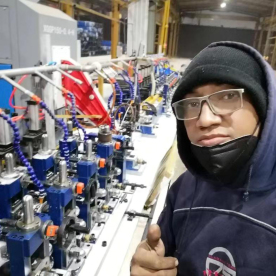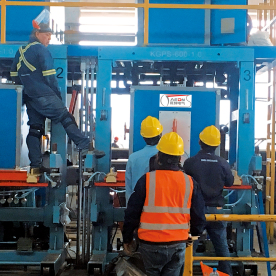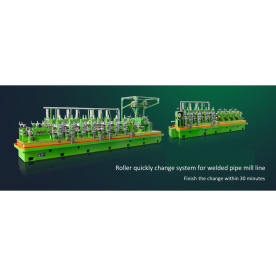[Portable induction heating equipment]Exploring the Benefits and Applications of Portable Induction Heating Equipment in Modern Industries
News 2024-7-20
****Induction heating is a cutting-edge technology that has transformed various industrial processes, making it more efficient, clean, and precise. Among the most notable advancements in this field is the development of portable induction heating equipment. This innovative solution brings all the advantages of traditional induction heating to wherever it is needed, revolutionizing the way industries approach heating tasks.

Exploring the Benefits and Applications of Portable Induction Heating Equipment in Modern Industries
Portable induction heating equipment refers to compact, easily transportable devices that utilize electromagnetic induction to heat conductive materials. Unlike traditional methods that rely on flames or resistance, induction heating produces heat directly within the material, providing rapid and uniform heating. This approach not only enhances efficiency but also minimizes energy consumption, making it an environmentally friendly alternative.
Benefits of Portable Induction Heating Equipment
1. **Versatility**: One of the most significant advantages of portable induction heating equipment is its versatility. It can be used in a variety of applications, from metalworking and welding to heat treatment and soldering. Industries such as automotive, aerospace, and manufacturing benefit greatly from the adaptability of portable induction heating solutions.
2. **Efficiency**: Portable induction heating is remarkably efficient. Conventional heating methods often waste energy through excessive heat loss to the surrounding environment. In contrast, induction heating minimizes this loss by directly heating the material, allowing for quicker heating times and reduced energy usage.
3. **Portability**: The compact design of portable induction heating devices allows users to take them wherever they are needed. This mobility is beneficial for on-site repairs, maintenance tasks, or projects that require heating in various locations. Technicians no longer need to transport heavy machinery; they can simply carry the portable unit with them.
4. **Safety**: Safety is a paramount concern in any industrial setting. Portable induction heating equipment enhances safety by reducing the risk of burns and fires. The equipment does not produce an open flame and generates heat only in the targeted material, minimizing the risk to the surrounding environment.
5. **Precision**: Induction heating equipment allows for precise temperature control, which is critical in applications where specific heat levels are necessary. This precision helps reduce the risk of overheating or damaging sensitive materials during the heating process.
6. **Reduced Environmental Impact**: As industries are increasingly focused on sustainability, portable induction heating equipment offers a clean alternative. It generates minimal emissions compared to combustion heating, contributing to a lower carbon footprint.
Applications of Portable Induction Heating Equipment
1. **Metalworking**: In the metalworking industry, portable induction heaters are used for tasks such as pre-heating metal parts for welding, bending, or forming. The ability to deliver localized heating ensures that only the required areas are heated, preventing warping or unnecessary stress on the material.
2. **Maintenance and Repairs**: Portable induction heating equipment is invaluable in maintenance applications, such as removing stubborn bolts or bearings. The equipment can heat these parts quickly, allowing for easier disassembly and reducing the likelihood of damage to surrounding components.
3. **Automotive Industry**: In the automotive sector, portable induction heaters are used for heat treatment of small components, pre-heating engine blocks, and performing alignment work. The mobility and rapid heating capabilities make these devices ideal for fast-paced environments.

Exploring the Benefits and Applications of Portable Induction Heating Equipment in Modern Industries
Conclusion

